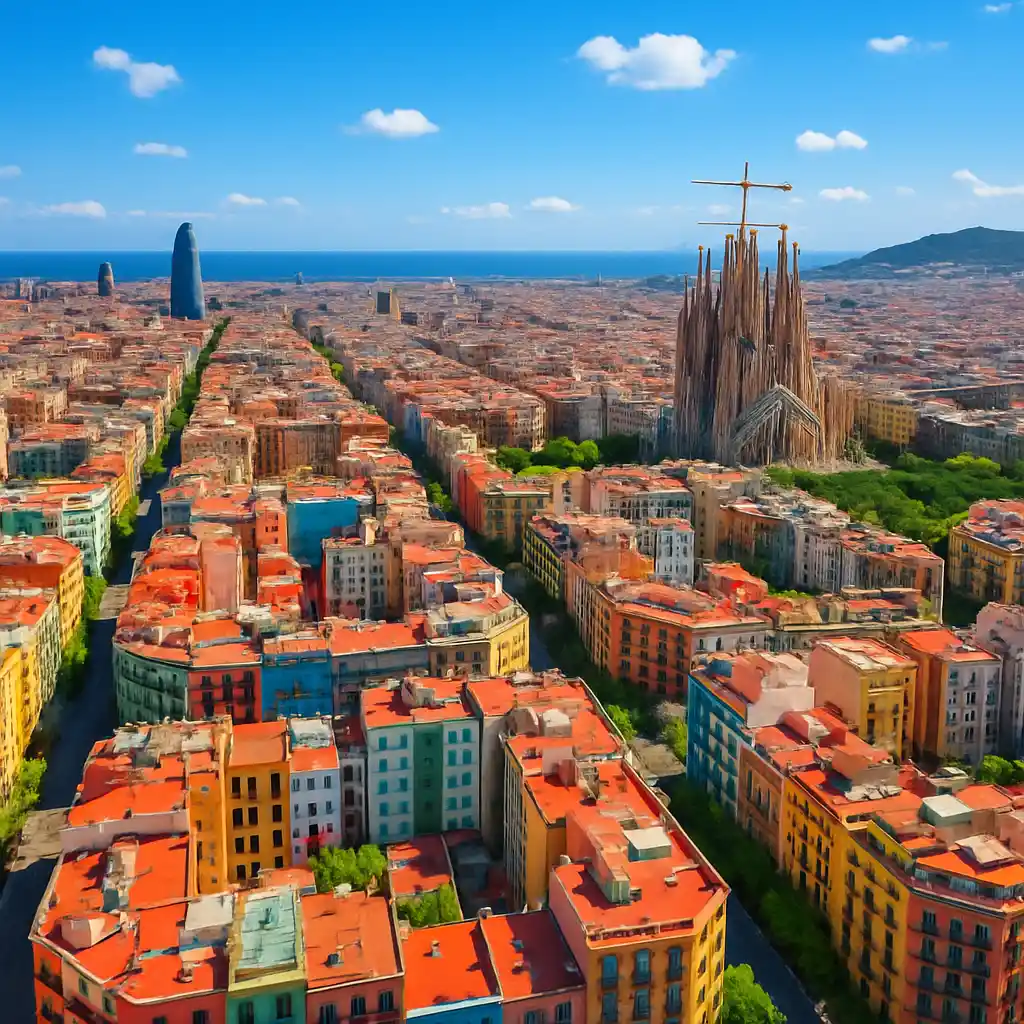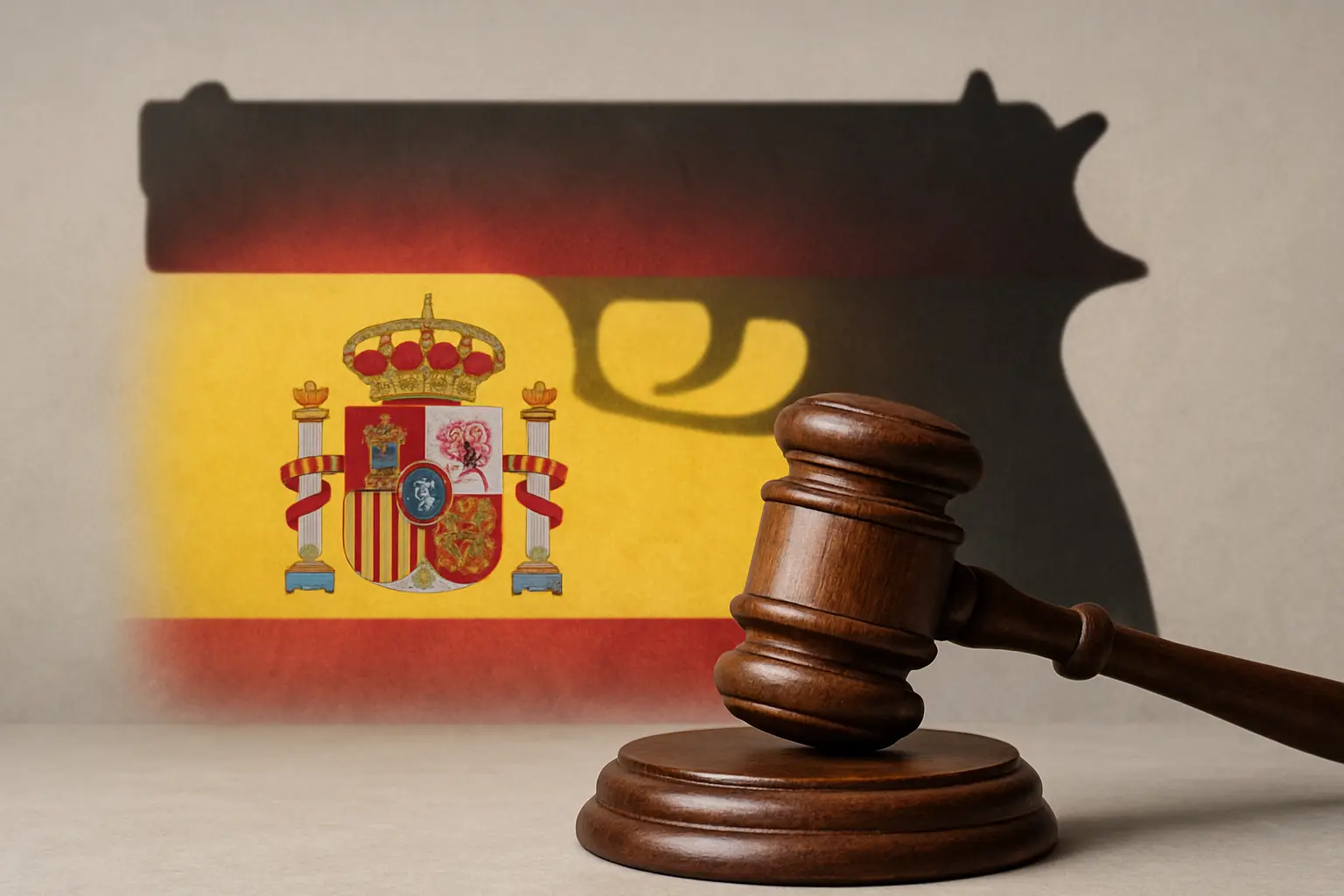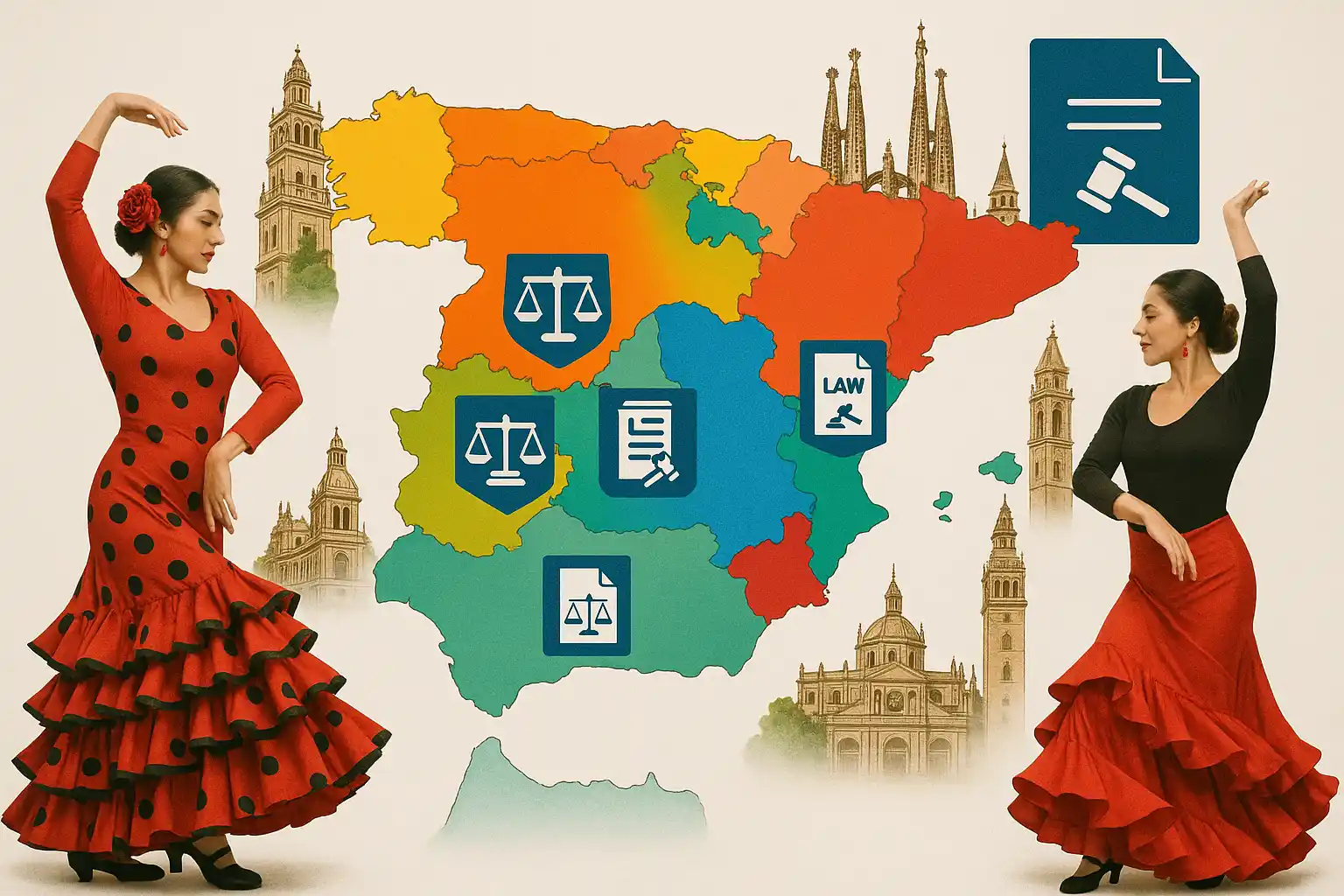Barcelona is one of the most vibrant cities in Europe, known for its rich culture, stunning architecture, and lively lifestyle. The city is made up of different districts of Barcelona, each with its own unique barrios that offer various living experiences. Choosing the right neighborhood is crucial for aligning with your lifestyle preferences, ensuring safety, and accessing essential amenities.
This guide focuses on the best neighborhoods in Barcelona to live, providing an in-depth exploration of seven top barrios. Readers will gain insights into each area’s character, housing options, conveniences, and atmosphere. Whether seeking metropolitan energy, historic charm, or tranquil residential streets, understanding the districts in Barcelona helps make informed decisions about where to call home.
It’s also important to understand the unique language landscape of Barcelona. The city has a diverse linguistic environment where Catalan significantly shapes culture, history, and identity today.
For those considering a move or investment in this extraordinary city, it’s essential to navigate the immigration process smoothly. This is where professional guidance can be invaluable. NIM Immigration lawyers, based in Barcelona and proficient in English, offer expert advice and assistance for obtaining various types of visas including the popular Digital Nomad Visa for Spain.
Understanding Barcelona’s Neighborhoods and Districts
Barcelona is organized into ten main districts, each comprised of several barrios or neighborhoods. This layered structure shapes the city’s dynamic urban fabric, where each barrio holds a distinctive character and lifestyle appeal.
Key aspects of Barcelona’s territorial organization include:
- Districts as administrative units: Large zones such as Eixample, Ciutat Vella, and Sant Martí serve as umbrella areas containing multiple smaller neighborhoods.
- Barrios as cultural and social hubs: These are the actual living quarters where community life unfolds, often with unique architectural styles, local markets, and social scenes.
- The relationship between districts and barrios reflects both historical development patterns and modern urban planning priorities. For an in-depth exploration of these aspects, you can refer to this study on the territorial organization.
Examples of Districts and their Barrios
For example:
- Eixample hosts barrios like Dreta de l’Eixample and Esquerra de l’Eixample, distinguished by their grid layout and iconic modernist architecture.
- Ciutat Vella includes the Gothic Quarter (Barrio Gótico) and El Born, areas rich in medieval history alongside vibrant nightlife.
- Sant Martí contains more contemporary barrios with a focus on innovation and waterfront access.
Navigating this complex mosaic requires reliable resources. Utilizing a neighborhoods of Barcelona map or digital guides helps residents and newcomers identify the best areas in Barcelona suited to their preferences for safety, amenities, or atmosphere.
Maps clarify spatial relationships among barrios, reveal transportation links, and highlight points of interest essential for making informed decisions about where to live. In a city as diverse as Barcelona, understanding its districts and barrios forms the foundation for selecting an ideal neighborhood aligned with one’s lifestyle goals.
However, it’s crucial to balance the exploration of these neighborhoods with responsible tourism practices. A comprehensive guide on managing tourism in Barcelona sheds light on how to enjoy the city’s offerings while ensuring sustainability and respect for local communities.
1. Eixample – The Modernist Heart of Barcelona
Eixample, also known as L’Eixample, stands out as one of the top 7 barrios in Barcelona to live for those who appreciate a blend of historic elegance and urban convenience. This district is renowned for its distinctive modernist architecture, prominently featuring works by Antoni Gaudí such as the iconic Sagrada Família, Casa Batlló, and La Pedrera. The architectural style here is characterized by geometric grid patterns, wide avenues, and chamfered corners designed to optimize light and airflow.
The neighborhood is divided mainly into two areas:
- Eixample Dreta (Right Eixample): Closer to the city center and major landmarks, this area tends to have a more upscale vibe. Housing costs here typically range from €1,200 to €2,000 per month, reflecting its prime location.
- Eixample Esquerra (Left Eixample): Slightly more residential and quieter than its counterpart but still vibrant, this area offers somewhat more affordable options, generally between €1,000 and €1,800 per month.
Residents benefit from an abundance of amenities:
- Upscale shopping boutiques lining streets like Passeig de Gràcia.
- Numerous rooftop bars offering panoramic views of Barcelona’s skyline.
- A diverse culinary scene with Michelin-starred restaurants alongside local tapas bars.
- Excellent metro connectivity through multiple lines including L2, L3, and L4.
This barrio suits individuals or families seeking a metropolitan lifestyle with immediate access to cultural hubs, business centers, and leisure activities. The combination of historical richness and modern facilities creates a dynamic environment attractive to both locals and expatriates.
Housing options vary from traditional modernist apartments with high ceilings and decorative details to contemporary flats equipped with modern comforts. The neighborhood’s walkability encourages residents to explore on foot or by bike while enjoying green spaces like Plaça Catalunya nearby.
Living in Eixample encapsulates the essence of Barcelona’s urban charm without sacrificing comfort or accessibility. It represents one of the best neighborhoods in Barcelona to live for those prioritizing architecture, lifestyle diversity, safety, and proximity to key city attractions.
2. Gràcia – The Trendy and Artistic Neighborhood
Gràcia stands out among the top 7 barrios in Barcelona to live for its distinctive hipster and multicultural atmosphere. This neighborhood has retained a strong community vibe, creating a unique blend of tradition and modernity that appeals to diverse residents. Unlike the metropolitan buzz of Eixample, Gràcia offers a more intimate setting while remaining vibrant.
Key features defining Gràcia:
- Family-friendly environment: Proximity to Park Güell provides ample green space and recreational areas, making it ideal for families and outdoor enthusiasts.
- Local charm: Streets like Calle Verdi are lined with quaint boutiques, natural bakeries, and independent cafes that emphasize artisanal products and sustainable living.
- Housing options: Loft apartments with spacious layouts combine contemporary living with historical character, appealing to those seeking quieter yet lively surroundings.
- Cultural scene: Frequent street festivals and artistic events reinforce Gràcia’s reputation as one of the best neighborhoods in Barcelona to live for creativity and social engagement.
This barrio presents an attractive alternative to L’Eixample’s modernist core. Its balance of tranquility and dynamic local life suits residents prioritizing community connection without sacrificing access to city amenities. For individuals valuing authenticity alongside convenience, Gràcia remains a top choice within Barcelona’s diverse urban fabric.
3. Sarrià-Sant Gervasi – Where the Rich Live in Barcelona
Sarrià-Sant Gervasi stands out among the top 7 barrios in Barcelona to live due to its status as one of the most affluent areas within the district of Barcelona. Characterized by large, sunny apartments and wide, tree-lined streets, this neighborhood offers a distinctly upscale residential experience. The area attracts those seeking tranquility without sacrificing access to city life.
Key features include:
- Spacious housing: Apartments here often surpass the size and brightness typical of more central neighborhoods like Eixample or L’Eixample, appealing to families and professionals alike.
- Green proximity: Extensive parks and natural spaces such as Collserola Park provide residents with outdoor recreational options rarely found in other areas of Barcelona.
- Independent shops: Boutiques and local businesses enhance the community feel, distinguishing Sarrià-Sant Gervasi from commercialized zones.
- Housing costs: Rental and purchase prices typically range from €1,000 to over €2,500 per month, reflecting the high demand for residences in this prestigious barrio.
Safety ranks highly here compared to many other areas of Barcelona. The strong sense of community contributes to a welcoming atmosphere that supports family life and long-term residency. Sarrià-Sant Gervasi remains a prime choice for those prioritizing comfort, security, and a refined lifestyle within Barcelona’s diverse urban landscape.
4. Les Corts – Upscale Living Near Business and Sports Hub
Les Corts stands out as one of the top 7 barrios in Barcelona to live due to its unique blend of residential tranquility and urban convenience. Situated adjacent to the city’s financial district, it offers residents immediate access to business centers while maintaining a calm neighborhood atmosphere.
Key characteristics of Les Corts include:
- Proximity to Camp Nou Stadium: Home to FC Barcelona, this iconic sports hub adds vibrancy and cultural significance. Residents enjoy easy access to matches and related events without sacrificing day-to-day comfort.
- Retail Excellence: The presence of L’Illa Diagonal, a premier shopping center with designer boutiques and upscale stores, caters to those seeking quality retail experiences close to home.
- Family-Friendly Environment: Numerous international schools make Les Corts attractive for families prioritizing education alongside lifestyle.
- Housing Affordability: Rental prices typically range between €1,000 and €2,000 per month, offering a more accessible option compared to neighboring luxury districts like Sarrià-Sant Gervasi.
- Access to Green Spaces: Les Corts provides convenient entry points to nearby parks and countryside areas, appealing to outdoor enthusiasts who value nature without leaving the city.
The neighborhood’s balance between metropolitan amenities and peaceful living positions it as one of the best neighborhoods in Barcelona to live for professionals, families, and sports fans alike. Its connection with other districts such as Eixample ensures seamless integration into the broader urban fabric while retaining distinct local charm.
5. Ciutat Vella (Including Barrio Gótico & El Born) – Historic Charm Meets Nightlife
Ciutat Vella, the oldest district in Barcelona, represents a unique blend of history and vibrant urban life. This area encompasses iconic neighborhoods such as Barrio Gótico and El Born, where narrow, winding streets reveal layers of Roman ruins and centuries-old architecture. The atmosphere is rich with cultural heritage, making it one of the top 7 barrios in Barcelona to live for those who appreciate historical depth.
Key features of Ciutat Vella include:
- Historic Landmarks: Roman walls, medieval plazas, and museums are integrated into daily life, offering residents constant access to Barcelona’s past.
- Vibrant Nightlife: Countless bars, tapas restaurants, and music venues create a lively evening scene. Despite its popularity with tourists, many locals find the area safe and enjoyable for nighttime strolls.
- Compact Living Spaces: Apartments tend to be smaller compared to areas like Eixample or Sarrià-Sant Gervasi but benefit from unbeatable centrality near major hubs such as Rambla de Catalunya and Plaça de Catalunya.
- Cultural Diversity: A mix of residents who value proximity to art galleries, theaters, and cultural events adds to the neighborhood’s dynamic character.
Ciutat Vella offers an authentic Barcelona experience with direct access to modern amenities while preserving its historic charm. It remains a favored choice among those seeking the best neighborhoods in Barcelona to live for culture lovers who enjoy walking city streets bathed in history by day and illuminated by nightlife after dark.
6. Sant Martí (Including Poble Nou) – Beachside Modernity and Surf Culture
Sant Martí stands out among the top 7 barrios in Barcelona to live for those seeking a blend of urban life and coastal charm. This district combines new developments with traditional architecture, offering residents access to the Mediterranean’s sandy beaches, ideal for swimming and surfing. The proximity to Barceloneta beach enhances its appeal for outdoor enthusiasts.
The heart of this area, Rambla de Poblenou, buzzes with lively bars, independent shops, and local markets, creating a vibrant community atmosphere while maintaining affordability. Rent prices here range from approximately €700 to €2,000, making it one of the best neighborhoods in Barcelona to live for budget-conscious individuals who do not want to compromise on lifestyle quality.
Connectivity within Sant Martí is excellent due to several metro lines running through the district. This feature ensures easy commutes to central hubs like Eixample or Ciutat Vella and seamless access to other parts of the city.
Sant Martí’s mix of modern apartment complexes and charming older buildings reflects Barcelona’s ongoing evolution—appealing both to young professionals attracted by surf spots and families valuing beachside living close to urban amenities. The neighborhood offers a unique balance rarely found elsewhere in the city: contemporary convenience paired with seaside relaxation.
7. Barceloneta – Beach Living With a Village Feel
Barceloneta, once a humble fishing village, has evolved into one of the top 7 barrios in Barcelona to live for those seeking a distinctive beachside lifestyle. Its transformation retains a charming village atmosphere characterized by narrow streets and simple homes, contrasting sharply with the modernity found in areas like Eixample (L’Eixample). This barrio is particularly suited for singles or short-term residents opting for hotels or apartment rentals close to the sea.
Key features highlight its appeal:
- Proximity to Barceloneta Beach, offering unparalleled access to sun, sand, and sea—a lifestyle rarely matched by other neighborhoods further inland.
- A pedestrian-friendly environment encourages walking at any time, day or night. While petty crime such as pickpocketing exists, common sense and vigilance generally ensure safety. For solo female digital nomads, there are essential safety tips and women-friendly stays available to make your experience more comfortable.
- The neighborhood’s compact layout supports a tight-knit community vibe despite its popularity with tourists.
Residents benefit from the unique blend of local life mixed with seasonal visitors, creating lively streets without sacrificing safety. The beachside location provides daily recreational opportunities such as swimming, jogging along the promenade, or enjoying seaside dining.
Barceloneta remains one of the best neighborhoods in Barcelona to live for those prioritizing beach access combined with an authentic, approachable urban setting. Its simplicity and vibrant waterfront culture create a distinct contrast to the architectural grandeur and metropolitan buzz found in L’Eixample or Gràcia. Moreover, it aligns perfectly with the 6 main reasons for living in Spain if you are a digital nomad, making it an ideal choice for those embracing this lifestyle.
Other Noteworthy Neighborhoods Worth Mentioning
Barcelona has several neighborhoods, known as barrios, that offer unique living experiences beyond the top seven. Here are some other neighborhoods worth considering:
1. El Raval
El Raval is known for its authentic vibe and attracts a creative crowd with its many music venues and cultural spaces. The neighborhood has a slightly edgy atmosphere, reflecting its diverse community. Residents enjoy the mix of tradition and modern city life, although some areas require being mindful of safety.
2. Poble Sec
Poble Sec is located at the foot of Montjuïc mountain and offers plenty of opportunities for outdoor activities along with a lively nightlife scene. Its closeness to green spaces and scenic views makes it appealing for those who appreciate both the convenience of city living and natural surroundings.
3. Horta-Guinardó
Horta-Guinardó is popular among students and young professionals due to its more affordable housing options and quieter residential environment. Situated away from tourist-heavy areas, it provides a peaceful alternative while still having good connections to the city center.
4. Sant Andreu
Sant Andreu maintains a small-town atmosphere within Barcelona, fostering strong community ties and traditional Catalan culture. The slower pace suits those seeking a close-knit neighborhood feel without giving up access to urban amenities.
5. Sants-Montjuïc
Sants-Montjuïc strikes a balance between residential living and urban access. Known for its wide streets and parks, it offers residents a comfortable lifestyle with convenient links to business districts and transportation hubs.
Each of these neighborhoods adds to Barcelona’s diverse character, catering to different preferences in community living, affordability, and lifestyle priorities.
Answering Your Burning Questions About Living in Barcelona
Best Neighborhoods in Barcelona to Live?
Choosing the best neighborhoods in Barcelona to live depends heavily on individual priorities such as lifestyle preferences, budget, family needs, and professional demands. The city’s diversity offers a broad spectrum of environments, from bustling urban hubs to tranquil residential quarters.
Key factors influencing neighborhood choice:
- Lifestyle and Atmosphere:
- Some prefer the metropolitan buzz found in areas like Eixample, where modernist architecture coexists with upscale amenities. Others seek a more bohemian or artistic vibe, as seen in Gràcia, known for its community spirit and cultural events.
- Safety and Community Feel:
- Districts such as Sarrià-Sant Gervasi offer a secure environment with spacious apartments and quiet streets, appealing especially to families or professionals valuing privacy and calm.
- Accessibility and Amenities:
- Proximity to public transport, shopping centers, schools, parks, and healthcare facilities plays a decisive role. For instance, Les Corts balances residential comfort with closeness to business districts and sports venues like Camp Nou.
- Housing Costs:
- Rental prices fluctuate considerably across neighborhoods. Central locations like Ciutat Vella command higher prices due to historical charm and nightlife but may involve smaller living spaces. Conversely, neighborhoods further from the center or less touristy can provide more affordable options.
Popular neighborhoods frequently cited among the best places to live:
- Eixample
- Central location with iconic architecture
- Mix of residential and commercial spaces
- Wide range of housing options (€1,000–€2,000)
- Gràcia
- Strong local identity and vibrant cultural scene
- Family-friendly parks near Park Güell
- Boutique shops and artisan bakeries
- Sarrià-Sant Gervasi
- Upscale residential feel with safety focus
- Access to green spaces like Collserola Park
- Larger apartments priced €1,000–€2,500+
- Les Corts
- Near financial districts and international schools
- Shopping centers such as L’Illa for convenience
- Balanced urban-suburban lifestyle
- Ciutat Vella (including Barrio Gótico & El Born)
- Rich historic atmosphere with Roman ruins and museums
- Bustling nightlife scene for social engagement
- Smaller apartments but unbeatable centrality
Different neighborhoods cater to varying expectations. For example, those working remotely or seeking digital nomad visas might favor areas with reliable internet infrastructure coupled with leisure options nearby.
Questions frequently arise about integrating into local communities or navigating bureaucratic processes for residency permits. Legal experts specializing in immigration advise selecting neighborhoods that not only fit one’s lifestyle but also offer practical access to administrative centers or legal services.
Residents’ experiences underscore the importance of visiting potential barrios at different times of day to gauge noise levels, foot traffic, and neighborhood dynamics before committing.
Living in Barcelona means engaging with a city that blends tradition with innovation. Selecting the best neighborhood involves balancing personal preferences against practical considerations such as safety, cost, amenities—and ultimately finding a place to call home within this vibrant metropolis.
Where Do the Rich Live in Barcelona?
Sarrià-Sant Gervasi stands out as the preferred choice for affluent residents among the best neighborhoods in Barcelona to live. This upscale district offers a combination of spacious, sunlit apartments and wide, leafy streets that appeal to those seeking tranquility without sacrificing city convenience.
Key features of Sarrià-Sant Gervasi include:
- Exclusive residential atmosphere with elegant villas and modern flats
- Proximity to extensive green spaces such as Collserola Park, providing outdoor recreation opportunities
- A strong sense of community supported by independent shops, gourmet markets, and quality schools
- Housing prices generally range between €1,000 and over €2,500 per month, reflecting its premium status
- Reputation as one of Barcelona’s safest neighborhoods with low crime rates
This area attracts families and professionals who value privacy, security, and a refined lifestyle. Accessibility remains good with well-connected public transport links to central Barcelona, allowing easy access to cultural hubs while enjoying a quieter neighborhood environment.
Sarrià-Sant Gervasi exemplifies how some of the best neighborhoods in Barcelona combine luxury living with practicality. The blend of natural beauty, sophisticated amenities, and exclusivity makes it a top contender for those prioritizing comfort and prestige in their choice of residence.
Where Is the Safest Place to Live in Barcelona?
Safety is a top priority when choosing from the best neighborhoods in Barcelona to live. Both residents and newcomers want areas with low crime rates, strong community connections, and dependable public services.
Sarrià-Sant Gervasi consistently stands out as one of the safest districts. It’s known for its:
- Quiet, residential streets
- Well-maintained public spaces
- Active neighborhood associations
This area attracts families and individuals who value peace and quiet but still want easy access to city amenities. The visible police presence and community watch programs further reinforce its reputation for safety.
Other neighborhoods recognized for their safety include Les Corts and certain parts of Eixample, where wide roads and organized city planning create a secure atmosphere. These areas strike a balance between calm residential living and closeness to business hubs, shopping spots, and cultural attractions.
Safety also relies on factors like good lighting, pedestrian-friendly streets, and quick access to emergency services. When deciding among the best neighborhoods in Barcelona, it’s important to consider these aspects along with your lifestyle preferences.
Residents often emphasize how safe neighborhoods promote a sense of belonging and encourage outdoor activities such as walking, jogging, or socializing in local parks. This vibrant environment contributes to an overall better quality of life in these communities.
What Is the Trendy Neighborhood in Barcelona?
Among the best neighborhoods in Barcelona to live, Gràcia stands out as the epitome of trendiness and artistic spirit. Known for its vibrant street life and multicultural atmosphere, Gràcia attracts a diverse community of creatives, young professionals, and families seeking an alternative to the bustling city center.
Key features of Gràcia include:
- Strong community vibe with lively plazas hosting regular cultural events and local markets.
- Quaint boutiques and artisan shops along streets like Calle Verdi offer unique shopping experiences.
- Natural bakeries and cozy cafés create inviting spots for socializing or remote work.
- Proximity to Park Güell, providing green space for relaxation and outdoor activities.
- Housing options range from charming loft apartments to traditional Catalan homes, appealing to those wanting a quieter yet dynamic environment.
The neighborhood’s reputation as a hipster hub reflects in its culinary scene, which blends international flavors with traditional Catalan cuisine. Accessibility is maintained through multiple metro lines and bus routes connecting Gràcia to central Barcelona.
Gràcia’s balance between artistic flair and everyday practicality makes it one of the best neighborhoods in Barcelona for those who value culture, community, and convenience. This barrio offers a lifestyle that combines creative energy with family-friendly warmth, making it an attractive choice within the city’s diverse residential landscape.
How Much Money Do You Need to Live Comfortably in Barcelona?
Living in Barcelona’s best neighborhoods requires understanding the cost of housing and lifestyle expenses. The best neighborhoods in Barcelona to live vary significantly in price, reflecting differences in amenities, location, and atmosphere.
1. Housing Costs
Eixample and Les Corts typically command rents between €1,000 and €2,000 per month for one-bedroom apartments. Sarrià-Sant Gervasi, known for its upscale residences, can reach upwards of €2,500+, appealing to those seeking spacious accommodations. More affordable options, such as parts of Gràcia or Ciutat Vella, may offer rents starting around €900, though smaller spaces are common here.
2. Utilities and Services
Monthly utilities (electricity, water, internet) usually add around €100–€150 depending on usage and apartment size.
3. Groceries and Dining
Monthly food expenses average between €250–€400, influenced by personal habits and whether dining out is frequent. Neighborhoods like Gràcia offer local markets with fresh produce that can help manage costs.
4. Transportation
A monthly public transport pass costs approximately €40–€60, granting easy metro and bus access across all districts.
Budgeting for a comfortable lifestyle in the best neighborhoods in Barcelona involves balancing housing preferences with daily living costs. Selecting a barrio aligns not only with financial means but also with desired lifestyle features such as community vibe, safety, and proximity to work or leisure spots.















